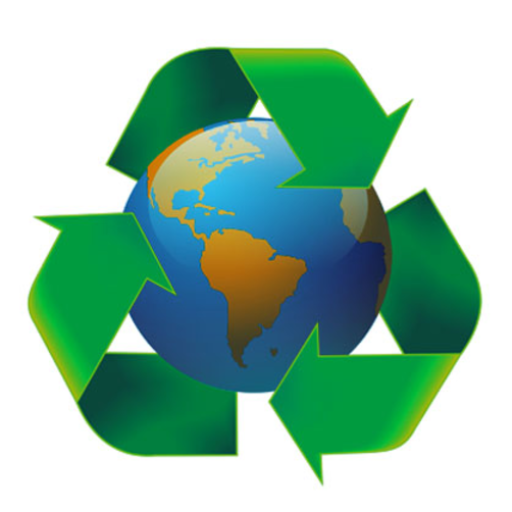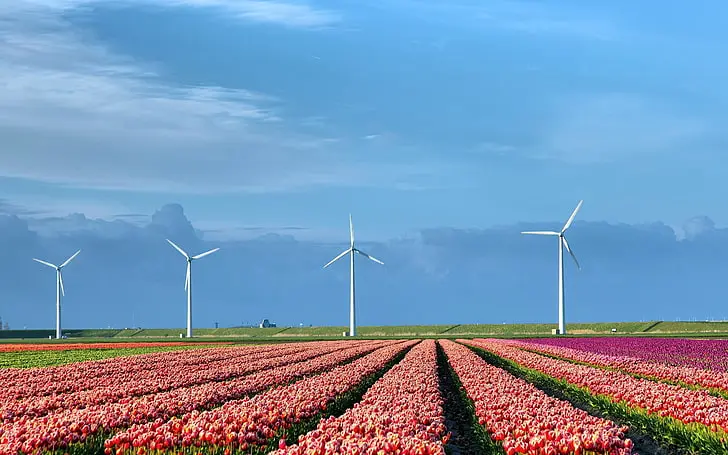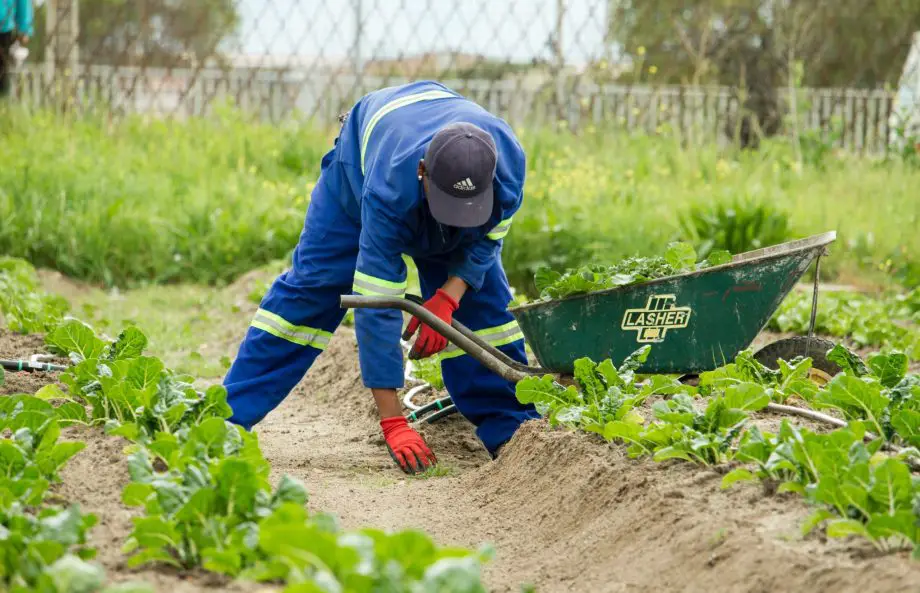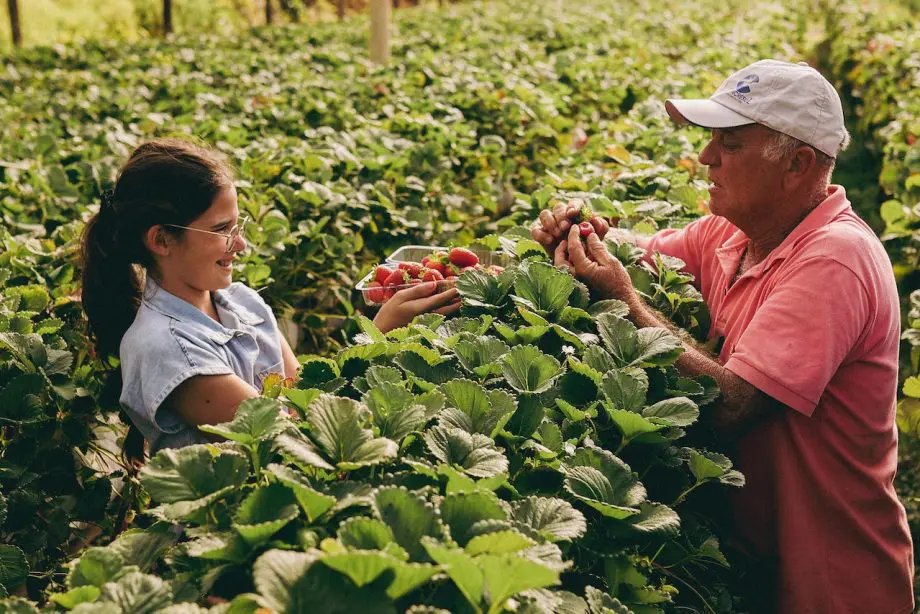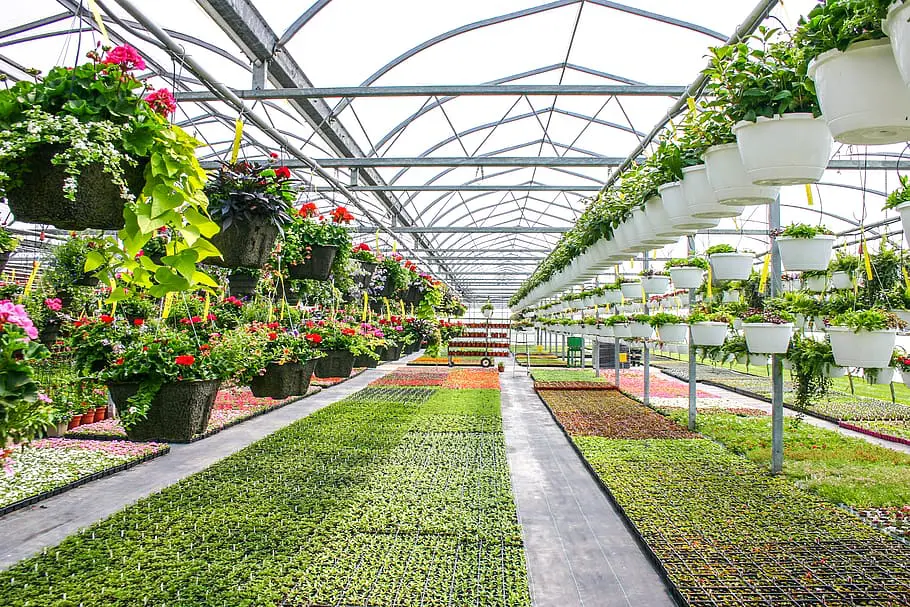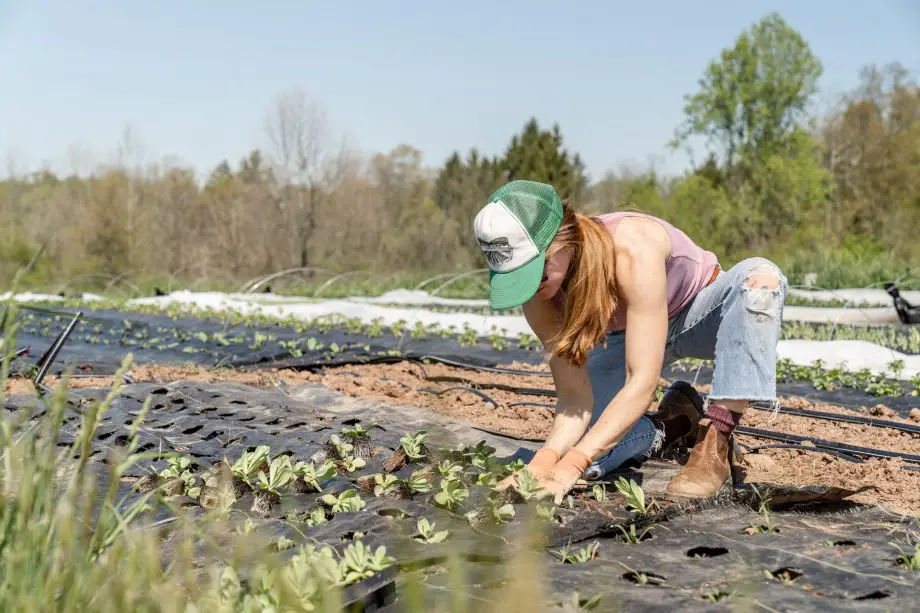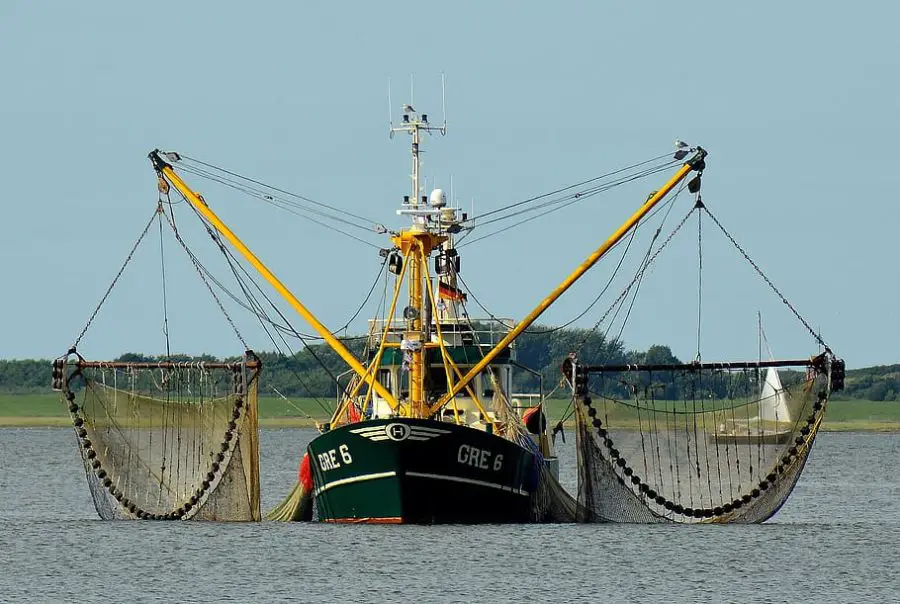
Explore the impact of our seafood choices! Dive deep into the question, can sustainable fishing help the environment? Learn about methods, benefits, and challenges.
So, you’ve heard the buzz about sustainable living, right? From reusable straws to electric cars, we’re all looking for ways to lessen our impact on the planet.
But here’s a question that doesn’t get enough airtime: Can sustainable fishing help the environment?
Well, grab your virtual fishing pole and join me as we delve into the deep waters of sustainable fishing to find out how it could be a game-changer for our planet.
Can Sustainable Fishing Help the Environment?
Sustainable fishing can help the environment by preserving fish stocks, reducing bycatch, and minimizing carbon emissions. These practices contribute to a balanced marine ecosystem and ensure that fishing activities don’t deplete resources for future generations. Overall, sustainable fishing fosters a healthier ocean and a more stable climate.
Ever wonder if the fish on your plate could be part of a bigger picture? Today, we’re diving into an intriguing question: Can sustainable fishing help the environment?
We’ll explore what sustainable fishing actually means, take a look at the current state of our world’s fisheries, and weigh the pros and cons.
We’ll also highlight some cool real-world initiatives that are making waves in the right direction. So come aboard as we set sail on this educational journey!
Briefly introduce the concept of sustainable fishing:
Hey, let’s kick things off by talking about what sustainable fishing actually is, shall we?
In simple terms, sustainable fishing is all about catching fish without depleting their populations or harming their natural habitats.
Think of it like harvesting apples from a tree without chopping the whole thing down.
The aim here is to fish in a way that our grandkids will also be able to enjoy the same seafood we do today.
It’s a blend of responsible practices, modern technology, and a dash of good ol’ respect for Mother Nature.
The relevance of the topic and growing environmental concerns:
Now you might be asking, Why should I care? Well, let me tell you, this topic is as timely as your smartphone’s news alerts.
With climate change, global warming of the oceans, deforestation, and pollution, our planet is going through a lot right now.
Our oceans are no exception. Overfishing has already led to the decline of many marine species and has thrown off the balance of entire marine ecosystems.
Just like reducing our plastic waste or lowering carbon emissions, shifting towards sustainable fishing is another puzzle piece in the big picture of environmental wellness.
Let’s explore whether sustainable fishing can have a positive impact on the environment:
So, why are we here chatting about this today? The goal of this blog is to unpack the question, Can sustainable fishing help the environment?
We’re not just skimming the surface, We’ll go deep into the methods used in sustainable fishing, its impact on marine life, and the challenges it faces.
By the end, you’ll have a clearer idea of how your seafood choices can either tip the scales towards a healthier planet or, well, the opposite. So stick around; it’s going to be a fascinating voyage!
What is Sustainable Fishing?
Alright, let’s get down to the nitty-gritty! What exactly is this thing we call sustainable fishing?
We’ve tossed the term around a bit, but let’s take a moment to really understand what’s behind those two words.
We’ll dive into its official definition, explore the three pillars that make it sustainable, and even peek into some of the methods that get the sustainability stamp of approval.
So if you’ve ever stood in front of a seafood counter, scratching your head about what to choose, this section’s for you!
Definition of Sustainable Fishing:
So, first things first, let’s put some parameters around what sustainable fishing actually means.
In layman’s terms, it’s the practice of fishing in a way that keeps fish populations healthy over the long term and doesn’t mess up their natural habitats.
It’s like gardening where you don’t pluck all the flowers; you leave enough to keep the garden flourishing for seasons to come.
The Three Pillars of Sustainable Fishing:
Now, sustainable fishing isn’t just a one-note melody; it’s more like a three-part harmony.
These are commonly referred to as the Three Pillars of Sustainable Fishing. Let’s break them down.
Environmental Sustainability:
The first pillar is environmental sustainability, which, let’s be honest, is the one most of us think about first.
This involves making sure that the fish populations can replenish themselves and that we’re not wrecking their homes with destructive fishing techniques.
Imagine you’re a guest in someone’s house. You wouldn’t eat all their food and trash the place, right?
It’s the same principle here but on a much larger scale involving entire ecosystems.
Economic Viability:
Next up, we have economic viability. No one’s going to keep fishing sustainably if they can’t make a living from it.
This pillar focuses on ensuring that fishing operations are economically feasible.
This might involve adapting new technologies or fishing methods that are not just eco-friendly but also cost-effective.
Think of it as finding that sweet spot between good for the planet and good for the wallet.
Social Equity:
Last but not least, let’s talk about social equity. This means ensuring that the benefits of fishing, especially in community-based setups, are distributed fairly.
Whether it’s providing equal opportunities for employment in fishing operations or ensuring that local communities have a say in how resources are managed, this pillar is all about fairness and representation.
It’s kind of like making sure everyone on a team gets a chance at bat. No one gets sidelined.
And there you have it! The three pillars that stand tall to support the overarching concept of sustainable fishing.
Together, they form a sturdy foundation for a practice that aims to be good for the fish, the fishermen, and all of us who share this planet.
Methods of Sustainable Fishing
Okay, folks, now that we’ve got the basics down, let’s talk shop. Fishing shop, that is!
In this section, we’re going to tackle the different methods of sustainable fishing.
Ever heard of longlining or handline fishing? Well, if you haven’t, buckle up!
We’re about to take a deep dive into the techniques that make fishing sustainable and why they matter.
Whether you’re an angler yourself or just someone who loves a good fish taco, knowing how your catch gets from the ocean to your plate is pretty darn interesting.
Longlining:
Alright, first up on our list is longlining. Picture this: a single fishing line that’s super long, sometimes miles long and that line has smaller lines branching off it with baited hooks.
Sounds like an underwater Christmas tree of sorts, doesn’t it?
The cool thing about longlining is that it can be modified to target specific species and reduce bycatch, which is the accidental capture of non-target species.
By setting the lines at specific depths or using certain types of bait, fishers can be more selective about what they catch.
Handline fishing:
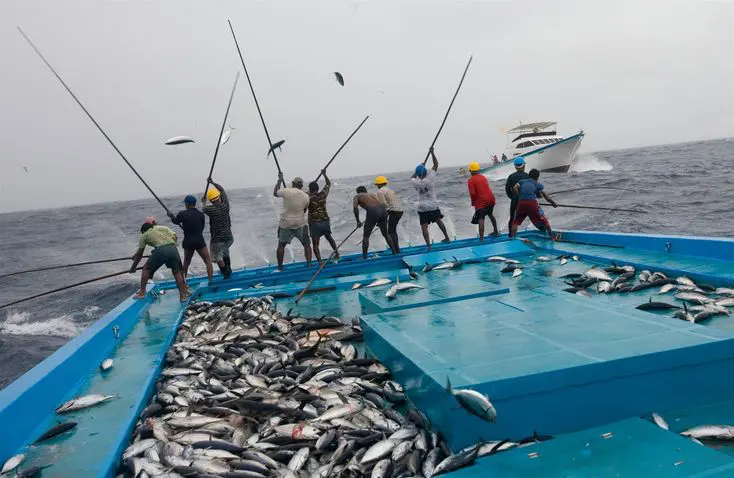
Next on the roster is handline fishing. Now, this is fishing at its most basic and artisanal.
We’re talking about a single fishing line with a hook at the end, held by a human.
That’s right, no fancy machinery or miles-long lines here. The beauty of handline fishing lies in its simplicity and selectivity.
Since fishers are pulling in one fish at a time, they can immediately release any bycatch.
It’s a low-tech but highly effective way to fish sustainably.
Trolling:
Last but not least, let’s talk about trolling and no, not the internet kind! In fishing terms, trolling means dragging lures or baited hooks behind a slowly moving boat.
What makes this method sustainable is that, much like handline fishing, it’s highly selective.
Fishers can easily release any fish that shouldn’t be caught, minimizing bycatch and environmental impact.
Plus, because the boat is moving slowly, there’s less chance of damaging sensitive habitats.
So, whether it’s longlining’s precision, handline fishing’s simplicity, or trolling’s leisurely pace, each method offers its own unique approach to fishing sustainably.
And remember, the method matters not just for the fish, but for the health of our oceans and, ultimately, our planet.
Why is netting unsustainable?
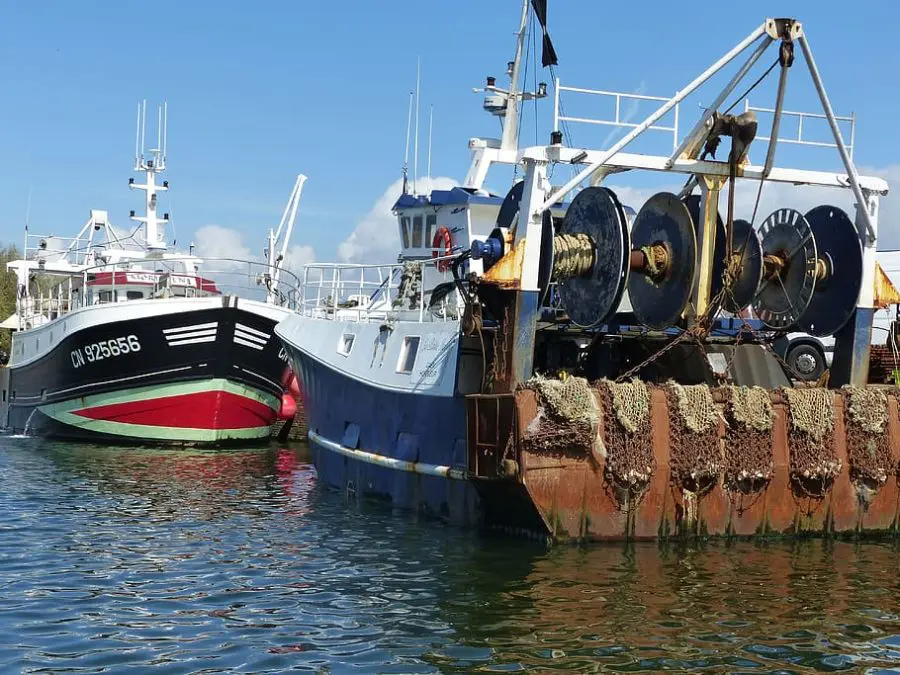
Netting, particularly the use of large trawl nets or gillnets, often gets a bad rap in sustainability circles, and here’s why:
Bycatch:
One of the biggest concerns is bycatch, which is when non-target species like dolphins, sea turtles, or even birds get caught along with the intended catch.
It’s kind of like using a huge vacuum cleaner that picks up everything in its path, not just the stuff you want to collect.
Habitat Destruction:
Trawl nets, especially bottom trawling, can wreak havoc on sensitive marine habitats like coral reefs or seagrass meadows. It’s akin to dragging a rake across a well-manicured garden; what’s left behind isn’t pretty.
Resource Depletion:
Because nets are so efficient, they can lead to overfishing, pulling in more fish than can naturally repopulate. Imagine emptying a pond of all its fish; there won’t be any left for future generations.
Energy-Intensive:
Some forms of net fishing require large boats with powerful engines, making it an energy-intensive method. The bigger the operation, the larger the carbon footprint, which doesn’t bode well for climate change.
Lack of Selectivity:
Unlike more sustainable methods, nets aren’t very selective. Fish of all sizes and species get caught, disrupting the natural balance and lifecycle of marine populations.
So while netting is often more efficient from a commercial standpoint, its downsides make it a tricky option when we’re talking about unsustainable fishing practices and sustainability.
But it’s worth noting that efforts are being made to improve nets and fishing practices to lessen their environmental impact. It’s a complex issue, but one that definitely deserves our attention.
Current State of Fisheries and Environmental Impact
Alright, now that we’ve gone over the how-to’s of sustainable fishing, let’s zoom out a bit and take a look at the bigger picture, the current state of our world’s fisheries and their environmental impact.
This is the part where we face some hard truths, but also find reasons for hope.
We’ll delve into what’s going on in our oceans, from dwindling fish populations to ecosystem imbalances, and explore how these issues intersect with sustainability.
Ready to dive in? Trust me, this is one chapter of the story you won’t want to skip.
Overfishing and Depleting Fish Stocks:
Let’s kick off by tackling overfishing and depleting fish stocks, shall we?
Overfishing is like binge-watching a TV series to the point where there’s nothing left to enjoy for later.
When we catch fish faster than they can reproduce, the population dwindles, sometimes to dangerously low levels.
This has ripple effects not just for that particular species but also for the predators that rely on them for food.
And let’s not forget, that smaller fish stocks mean less income for fishers.
So, the stakes are pretty high, both for the ocean and for the people whose livelihoods depend on it.
Impact on Marine Ecosystems:
Moving on to our next pressing concern, the impact on marine ecosystems.
You see, overfishing doesn’t just affect fish populations; it throws the whole ecological balance out of whack.
For example, if too many predator fish are caught, the prey they usually munch on may overpopulate and devour the plant life, affecting water quality and other marine life.
It’s a domino effect that can have long-lasting consequences.
Carbon Footprint of Commercial Fishing:
Alright, let’s get into the carbon footprint of commercial fishing.
Ever think about the amount of fuel it takes to power those massive fishing boats? Or the energy needed to freeze and transport fish across continents?
Yeah, it adds up pretty quickly. This carbon footprint contributes to climate change.
Which, in turn, has its own set of disastrous effects on marine life like ocean acidification and rising sea levels.
It’s a cycle that feeds on itself, sort of like a never-ending loop of bad habits that are tough to break.
Case Study: The Collapse of the Newfoundland Cod Fisheries:
Last but definitely not least, let’s delve into a real-life cautionary tale, the collapse of the Newfoundland cod fisheries.
Once upon a time, these waters were brimming with cod, so much so that it was said you could practically walk on them.
But decades of relentless fishing led to a collapse in the ’90s, leaving coastal communities devastated and an ecosystem in shambles.
This story serves as a glaring example of what happens when we ignore the signs and continue with unsustainable practices.
It’s like ignoring all the warning lights on your car’s dashboard until it finally breaks down; by then, it’s often too late for quick fixes.
So there you have it, folks. These aren’t just isolated issues; they’re interconnected challenges that need our collective action.
From making better seafood choices to supporting policies that enforce sustainable fishing, every little bit helps.
The Environmental Benefits of Sustainable Fishing
After unpacking some of the challenges facing our oceans, let’s switch gears and focus on the upside. Yes, there is one!
In this section, we’re diving into the environmental benefits of sustainable fishing.
We’ll explore how doing right by our fishy friends can lead to healthier oceans, more stable ecosystems, and an even brighter future for our planet.
So, if you’ve been searching for some good news, you’re in the right spot!
Let’s jump in and uncover the silver linings that sustainable fishing brings to the table.
Preservation of Fish Stocks:
Okay, first up is something we all can cheer for: the preservation of fish stocks.
Sustainable fishing practices are like a well-managed savings account for fish. You only withdraw what you can afford to lose, ensuring that there’s plenty left for the future.
This means quotas, size limits, and fishing seasons are all part of the game plan.
By adhering to these rules, we allow fish populations enough time to recover and reproduce.
It’s long-term thinking at its best, and the fish will be around for future generations to enjoy, both on the hook and on the plate.
Compare the rates of fish stock recovery in sustainable vs. non-sustainable fishing areas:
Ever wonder what happens when we put sustainable practices to the test?
Studies have shown that areas managed with sustainability in mind show quicker recovery rates for depleted fish stocks.
It’s like comparing a garden that’s well-tended versus one that’s been picked clean.
In the first case, you’ll see flourishing plants season after season, while in the second, you’re left with barren soil.
So, the numbers don’t lie: Fish are making a comeback in sustainable zones, and that’s a win-win for everyone involved.
Minimized Bycatch:
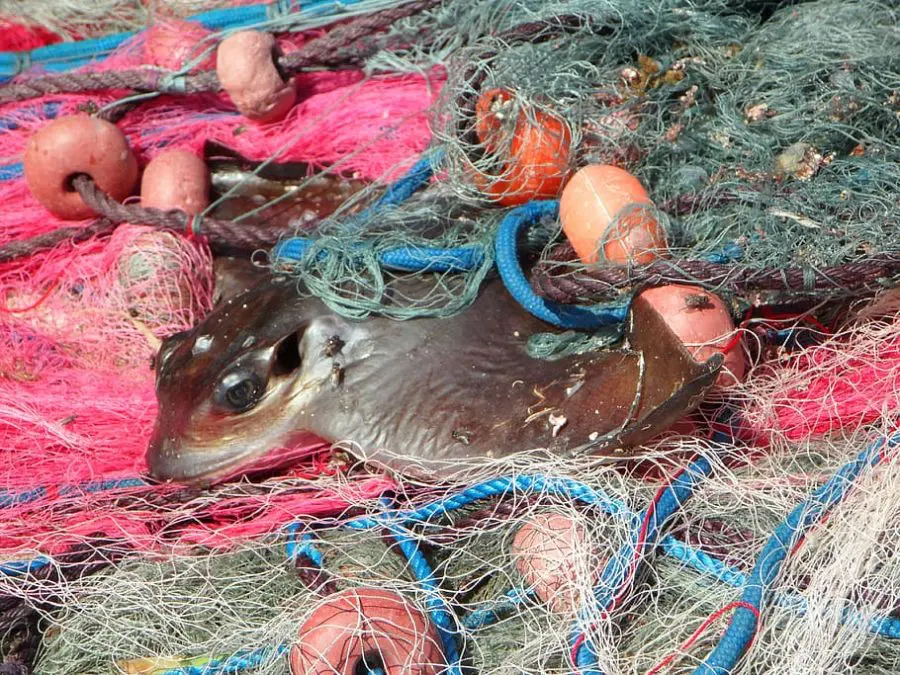
Now let’s talk about bycatch, which is one of those terms that make environmentalists cringe.
Thankfully, certain sustainable fishing methods like handlining and trolling are incredibly selective, almost like using tweezers instead of a shovel to pick up gems.
They catch what they’re meant to catch and leave the rest unharmed.
And if something unwanted does get hooked, it’s usually returned to the ocean in better condition, all thanks to the slower, more meticulous approach.
Lower Carbon Emissions:
Up next, let’s discuss the carbon footprint or should I say fin-print?
Sustainable fishing methods usually involve smaller boats and simpler gear, which means less fuel consumption and fewer greenhouse gases.
It’s kind of like choosing a bike over a gas-guzzling SUV for a quick trip to the store. You get where you need to go but with a much smaller environmental impact.
Maintaining Biodiversity:
Last but not least, we have maintaining biodiversity, the unsung hero of environmental health.
Sustainable fishing ensures that no single species is targeted to the point of endangerment, which helps keep the ecosystem balanced.
Every species has a role to play, and when one goes missing, the entire ecosystem is affected.
By keeping a diverse population of marine life, we ensure a healthier, more resilient ocean.
So there’s a glimpse into the better world that sustainable fishing practices can create.
Not only do they offer immediate benefits, but they also set the stage for a healthier, happier planet down the line.
Challenges and Criticisms
Alright, we’ve celebrated the victories, but let’s not put on the rose-colored glasses just yet.
It’s time to confront the challenges and criticisms that come with sustainable fishing.
Yep, it’s not all smooth sailing, no pun intended. While sustainable fishing has its merits, it also faces its share of scrutiny and roadblocks.
From regulatory hurdles to skepticism about its effectiveness, we’re about to dive into the nitty-gritty that often gets swept under the rug.
Don’t worry, though; knowing the challenges is the first step in overcoming them.
So, let’s get into it and figure out what we’re up against.
Economic Costs:
So, first on the docket is the economic costs, and let’s be real, it’s a biggie.
Switching to sustainable methods can be like trading in an old, reliable car for a new electric one.
The long-term benefits are obvious, but the upfront costs? Ouch.
Fishermen often have to invest in new gear, technology, or even entirely new boats to meet sustainability standards.
Plus, smaller yields can mean less immediate income.
It’s an investment in the future, but when you’ve got bills to pay right now, that’s easier said than done.
Monitoring and Regulation:
Next up, we’ve got the ever-tricky topic of monitoring and regulation. International agreements can be difficult.
Imagine trying to enforce a speed limit on a road that spans multiple countries, with different governments and rules.
Yeah, it’s that complicated. The ocean doesn’t belong to any one nation, which makes enforcing sustainable practices a global challenge.
Plus, unreported, and unregulated illegal fishing is still a thing, folks.
It’s like trying to stop people from jaywalking when there’s no one around to catch them.
Global collaboration and consistent monitoring are crucial but tough to execute.
Skepticism and Criticisms:
Last but not least, let’s talk about skepticism and criticisms. Just like any movement, sustainable fishing has its detractors.
Some argue that it’s not enough to make a real difference, a bit like putting a band-aid on a broken arm.
Others say it’s a buzzword that can be misused for marketing, luring in consumers without making real change, like labeling a product natural when it’s anything but.
These counterarguments force us to critically evaluate our efforts and adapt strategies, but they can also create confusion and slow down progress.
If sustainable fishing were easy, we’d all be doing it, right?
But these challenges offer not just obstacles but also opportunities for innovation and collaboration.
And the more we understand them, the closer we get to finding workable solutions. Time to roll up those sleeves and get to work!
Real-world Examples of Sustainable Fishing Initiatives
Now that we’ve navigated the choppy waters of challenges and criticisms, how about some inspiration?
Time to leave theory behind and venture into real-world stories that prove sustainable fishing isn’t just a pipe dream. It’s happening, and it’s making a difference.
From community-led projects to tech innovations, we’re about to explore some bright spots on the map where sustainable fishing is not just a buzzword but a way of life.
So, get ready to be inspired and perhaps even discover some practices you can support or adopt yourself. The ocean’s the limit!
Community-Based Fisheries in Indonesia:
Let’s start our world tour in Indonesia, shall we? Here, community-based fisheries are doing something pretty remarkable.
Think of it as a neighborhood watch but for fish. Local fishermen work together to establish rules like no-fishing zones and gear restrictions.
It’s grassroots marine management, and it’s working. Fish stocks are rebounding, and fishermen are seeing bigger catches of the right kinds of fish, mind you.
It’s a testament to the idea that sometimes, the people closest to the issue (literally, in this case) are the best ones to manage it.
Alaska’s Sustainable Fisheries Model:
Next stop: Alaska! You might associate it more with snow and ice than fish, but Alaska’s doing something worth shouting about.
Their sustainable fisheries model is one of the best in the world, kind of like the gold standard in responsible fishing.
Strict quotas, rigorous monitoring, and public accountability are all part of the deal.
It’s like a well-oiled machine that ensures fish populations remain robust year after year.
Plus, their practices are so transparent that you can easily track the journey of your Alaskan salmon from ocean to plate.
Marine Stewardship Council (MSC) Certification:
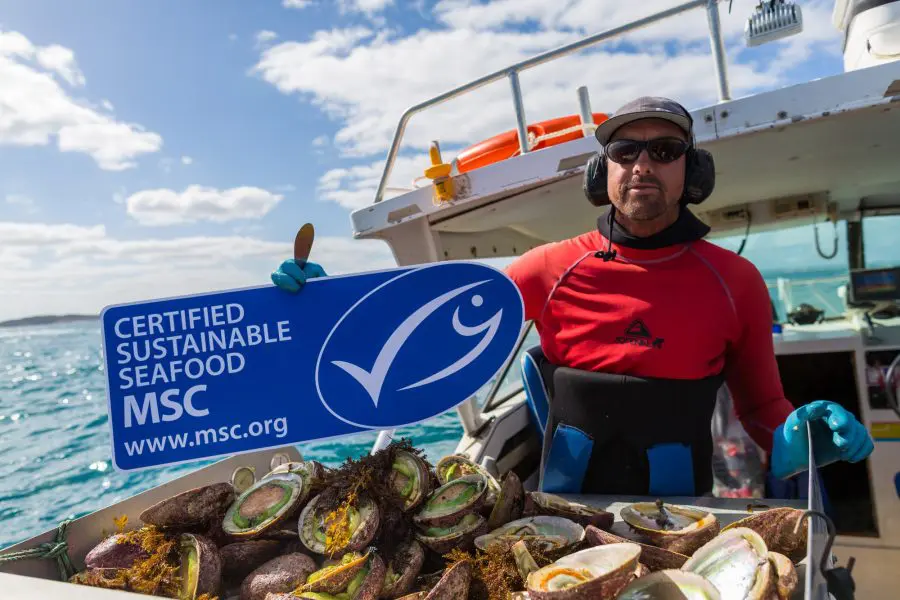
Last on our list is the Marine Stewardship Council, or MSC for short. Think of them as an agricultural organization and the quality inspectors of marine resources and the seafood industry.
They give out certifications to fisheries that meet their stringent sustainability criteria.
Ever seen that blue label on a can of tuna at the grocery store? That’s them telling you it’s a guilt-free purchase.
MSC acts as a neutral third party that consumers can trust, sort of like a good referee in a heated game.
Their presence creates a ripple effect, encouraging more fisheries to get on the sustainability train.
So, from Indonesia to Alaska and onto your dinner plate, sustainable fishing initiatives are making waves.
These real-world examples show us what’s possible when we put our minds, and nets, to good use.
And trust me, it’s more than just a drop in the ocean. It’s the start of a sea change.
The Bigger Picture – Interconnectedness of Ocean Health and Sustainable Practices
Alright, we’re nearing the end of our journey, and it’s time to zoom out and look at the bigger picture.
Ever heard the phrase everything is connected? Well, when it comes to ocean health and sustainable fishing, truer words have never been spoken.
We’re about to delve into how our fishing habits don’t just affect the fish, but the whole darn ecosystem, from coral reefs to seabirds and even the climate.
Sustainable practices aren’t just a side gig for fisherfolk, they’re a critical chapter in the story of our planet’s wellbeing.
Ready to connect the dots? Let’s dive in.
Coral Reefs and Fisheries:
First up, let’s talk about coral reefs and their complex relationship with fisheries.
It’s like a neighborhood where everyone knows everyone else’s business.
When fishing is done right, it can help keep the balance in these intricate ecosystems.
Too much fishing, especially the wrong kind, can tip the scales and turn a vibrant coral neighborhood into a ghost town.
Sustainable fishing practices make sure the reefs stay colorful and lively, ensuring they continue to act as nurseries for young fish and a haven for biodiversity.
Impact on Climate Change:
Now, you might be thinking, What does fishing have to do with climate change?
Well, a lot actually. Overfishing and harmful fishing methods can release stored carbon from ocean floors.
It’s kind of like digging up a time capsule you weren’t supposed to open.
The healthier our oceans are, the better they can act as carbon sinks to help mitigate climate change.
Sustainable fishing helps keep this delicate balance in check. So, yes, how we fish can affect how hot our summers are.
Importance of Consumer Choices:
Ever wonder if your personal choices really matter in the grand scheme of things?
Spoiler alert: They do! Each time you opt for sustainably sourced seafood, it’s like casting a vote for healthier oceans.
Over time, those choices add up, turning into market demand that fisheries can’t ignore.
It’s Economics 101. The customer is always right. So if enough customers demand sustainability, guess what the industry will provide?
How consumer demand for sustainably-sourced seafood can drive change:
Building on that last point, let’s dig deeper into how consumer demand actually becomes the catalyst for change.
When you willingly pay a bit more for that MSC-certified tuna, you’re sending a message up the supply chain.
Fisheries notice this demand and, in turn, are more likely to adopt sustainable practices to get that certification and win your business.
It’s a virtuous cycle: your choices drive industry standards, which then make it easier for you to make sustainable choices.
The bigger picture isn’t just a tapestry of isolated threads but a complex, interconnected web.
From the coral reefs to your dinner plate, every choice and action plays a role.
And the beautiful part? You have the power to make a difference, one sustainable seafood dinner at a time.
FAQs
We’re rounding the final bend of our deep dive into sustainable fishing, and you’ve got questions. Trust me, I get it.
In this section, we’re going to tackle some of the most frequently asked questions that are probably popping into your head right about now. Let’s get those questions answered!
Q: How does fishing benefit the environment?
A: The age-old question! Believe it or not, fishing when done sustainably actually plays a role in maintaining a balanced marine ecosystem.
It helps control fish populations, ensuring that no single species dominates the underwater landscape.
This leads to greater biodiversity, which, in the long run, makes for a healthier and more resilient marine environment.
Q: What can I do to help the fishing industry be more environmentally friendly?
A: One of the most powerful things you can do is to vote with your wallet.
Choose to buy only sustainably sourced seafood, preferably those with eco-friendly certifications like MSC.
You can also advocate for better fishing practices by speaking up, sharing information, and even supporting organizations that work towards marine conservation. Remember, demand drives supply!
Q: Which fishing method is the least harmful to the environment?
A: Generally, methods like handline fishing and trolling are considered less harmful because they’re more selective and lead to less bycatch, that’s the unintentional capture of non-target fish species.
Longlining can be sustainable too if managed carefully. But remember, the devil’s in the details, and how these methods are implemented can make a world of difference.
Q: What is the difference between sustainable and unsustainable fishing?
A: At its core, the difference boils down to long-term impact.
Sustainable fishing is all about ensuring that fish populations remain healthy for future generations.
It employs methods that minimize bycatch, protect juvenile fish, and avoid overfishing.
Unstable fishing, on the other hand, is like a free-for-all buffet—it depletes fish stocks, harms other marine life, and can lead to irreversible damage to marine ecosystems.
Conclusion
Well, folks, we’ve cast a wide net today, covering everything from what sustainable fishing actually means to its impact on the health of our planet.
As we reel in our discussion, it’s clear that our choices, both as consumers and as members of this blue planet, really do matter.
This isn’t just a fish tale. It’s a story about the interconnected web of life, where each thread counts. Ready to tie up all the loose ends?
Let’s wrap this up and talk about how you can be a part of this bigger, more hopeful story for our oceans.
Recap the Main Points:
Let’s take a moment to remember the highlights.
We’ve talked about what sustainable fishing is, covering its three pillars: environmental sustainability, economic viability, and social equity.
We’ve explored various methods that are easier on Mother Nature and discussed the current state of the fishing industry and its environmental impact.
But we didn’t stop there; we also looked at the benefits, the challenges, and some real-world examples of sustainable fishing initiatives that are making waves.
Present the Final Thoughts on the Environmental Impact of Sustainable Fishing:
Okay, so here’s the deal: sustainable fishing isn’t just a buzzword. It’s a way of life that could make or break the health of our oceans and food security. Having enough fish is important and for some nations it’s their primary source of protein
The environmental impact is tangible. Sustainable practices help maintain fish stocks, protect marine habitats like coral reefs.
They even fight climate change to some extent by reducing the carbon footprint of fishing operations.
It’s not just about fish. It’s about the future of our planet.
Call to Action: Encourage Readers to Support Sustainable Fishing Initiatives:
Now, it’s your turn to take the helm. If you’ve made it this far, chances are you care about this stuff.
So, let’s put that care into action! First off, consider opting for sustainably sourced seafood when you shop or dine out.
If you can, support local fisheries that are doing the right thing. And hey, maybe even donate to organizations working on marine conservation.
Your support, no matter how small it may seem, contributes to a larger, collective effort to turn the tide for our oceans.
So we’ve rounded up what you need to know and what you can do. The ocean covers 71% of our planet, but it’s 100% in our hands to protect it. Ready to make some waves?
